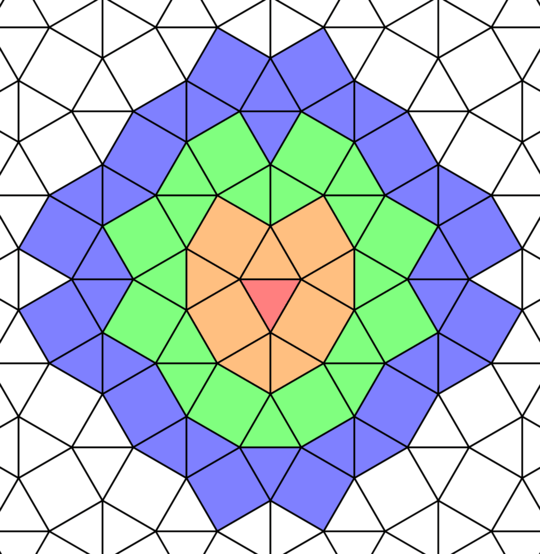21
2
This challenge takes place on the snub square tiling.
Start by choosing any triangle, and color it \$c_1\$. Next, find all tiles which touch this triangle at any vertex, and color them \$c_2\$. Next, find all tiles which share a vertex with any \$c_2\$-colored tile, and color these \$c_3\$. Continue this process ad infinitum.
Illustration
Initial terms
The sequence begins
a(1) = 1
a(2) = 9
a(3) = 21
a(4) = 35
Notice:
a(1) = 1corresponds to the red triangle;a(2) = 9corresponds to the number of tiles in the second, orange layer;a(3) = 21corresponds to the number of tiles in the third, green layer; and so on.
(Note, this sequence is not in the OEIS, but OEIS sequence A296368 is closely related.)
Challenge
Your goal is to write a program that takes in a positive integer n and returns the number of tiles that are colored \$c_n\$, (i.e. the number of tiles in the \$n\$-th layer.) This is a code-golf challenge, so the shortest code in bytes wins.


3This looks like a lion! +1 – RGS – 2020-02-04T21:42:09.633
3Can this be zero indexed? – Jo King – 2020-02-04T22:23:54.773
1@JoKing, I'd like to keep it one-indexed—partly because folks have already submitted solutions with that assumption. – Peter Kagey – 2020-02-04T22:26:01.180